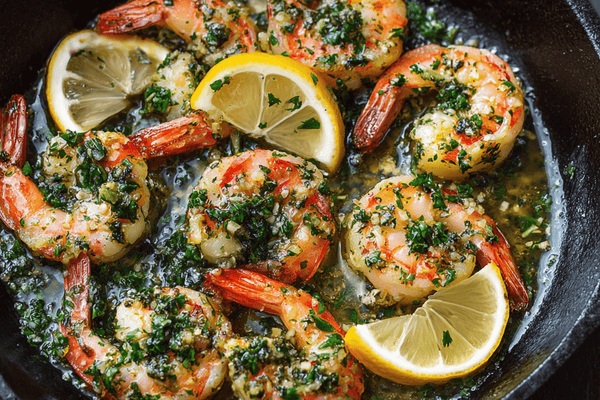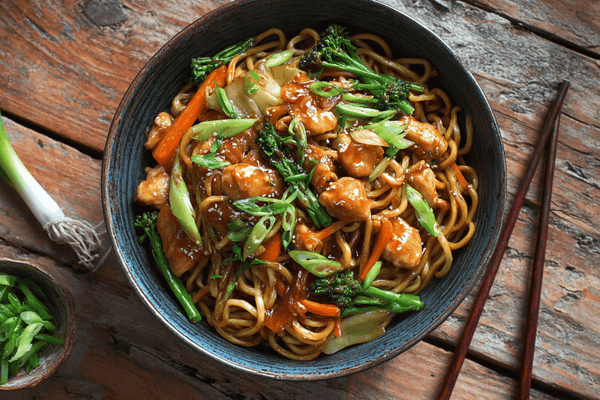
With such a vast range of specialist Japanese knives, it can often be quite difficult to tell these knives apart and determine what their best purpose is in the kitchen. While you can use most knives for a range of applications, certain knives are designed to cut certain food types and Japanese knives, in particular, are often specialized for a specific purpose.
Two of the most common Japanese knives that we find people struggle to differentiate between are the Nakiri and Santoku knives.
There are many differences between the Santoku and Nakiri knives however the major difference is their cutting purpose or application. A Nakiri is a specialty knife designed for cutting vegetables whereas a Santoku knife is an all-purpose kitchen knife that is adept for use on a range of food types, primarily meat, fish and vegetables.
Japanese knives all have certain characteristics and designs that allow them to be well suited to very specific cutting purposes. This focus on specialization is great in terms of creating a high-quality and functional knife however it can sometimes be difficult to tell different Japanese knives apart.
Below we run through the key differences between two of the most popular Japanese knives, the Nakiri and Santoku to help you understand the purpose of each and better understand which would be most suited to your knife collection.
Table of contents
What Is the Difference Between a Nakiri Knife and a Santoku Knife?
Japanese knives are unique and often manufactured to a professional standard, the knives are well-balanced, are created with a thin, lightweight and sharp blade and, most importantly, have undergone years of refinement from expert blacksmiths to handle your cutting, chopping, peeling, slicing and dicing needs.Once you are familiar with the Japanese knife style it can be very easy to tell them apart from the Western equivalents however, telling one Japanese knife apart from another can be a tricky task.
While the Nakiri and Santoku don’t look very similar and perform different functions, we’ve found that people still wonder what the difference between these two knives is. One key reason for this is perhaps the fact that a Nakiri is quite a difficult knife to use if you are not a professional chef.
When the Santoku was first introduced in the 1940s, many assumed that it intended to be an easier-to-handle vegetable knife as it has taken inspiration for the general-purpose, Western chef's knife.
With this in mind, we’ve therefore put together a useful comparison that outlines the key features and differences below to show whether the Santoku was intended to be an easier to use Nakiri alternative or whether its purpose was for something else entirely.
Santoku Knife Characteristics

The Santoku or Santoku Bocho is the Japanese equivalent to a Western chef's knife and is an all-purpose knife designed to handle most kitchen cutting tasks.
The name Santoku can be translated to mean ‘three virtues’, which essentially means three uses or three purposes. These three uses are slicing, mincing, and dicing for an all-around versatile knife, others further interpret these uses to mean that the knife can be used on meat, fish and vegetables.
A Santoku can usually be identified by its sheep foot design blade which encompasses a relatively straight edge and a very slight point (similar to a Western chef’s knife). The blade is typically 5” - 8” in length with a very sharp edge typically sharpened to a 20 - 30 degree angle for the double bevel models.
A Santoku knife is one of the most versatile knives you can own, not just in terms of its functionality but also for the range of designs. Santoku knives can be modified to have a single or double bevel edge, they can hold a Granton edge, can be made from carbon steel or Damascus steel, and can range in size to suit any purpose.
A Santoku is therefore open to Western or Japanese customization and it is truly a hybrid model for a general-purpose chef's knife.
Advantages of Using a Santoku Knife
The obvious advantage of using a Santoku knife is that it’s a versatile and multi-purpose knife that will cover the vast majority of your cutting requirements.The versatility of the knife is the key reason why it has become the most popular knife in Japanese kitchens and also why it has seen increasing popularity in the Western world.
Santoku knives are also incredibly sharp, their edge is sharpened to a 10 - 15 degree angle on both sides giving a 20 - 30 degree angle in total for a double bevel knife or the edge is sharpened to a 10 - 15 degree on just one side of a single bevel knife giving it an ultra-sharp 10 - 15 degree edge in total.
This incredibly sharp edge, often combined with a Granton edge, allows this knife to pass cleanly and easily through a variety of foods and even a kitchen novice can make great cuts effortlessly with a Santoku.
Santoku knives can also come in a variety of styles, while the most common design is a sheep foot blade with a relatively flat edge and slightly pointed tip, you can get designs that take Western inspiration and have a more curved tip with a pointed edge to allow for rock chopping.
This combined with the knife’s equally balanced design allows for a pinch grip to be used as well as different peeling and slicing techniques.
Finally, a Santoku knife is made from a high-quality carbon-steel blend which allows this knife to be thinner, lighter, and hold a sharper edge for longer and this combination is a leading reason why more Western chefs are favoring a Santoku as their general-purpose kitchen knife.
Nakiri Knife Characteristics

Unlike the Santoku knife, the Nakiri is not designed for multi-purpose use and is specially designed for cutting vegetables. While the Santoku can cut equally well on meat, fish, and vegetables a Nakiri does not have this level of versatility and you can end up damaging this blade if used improperly on something other than vegetables.
Japanese cuisine places a strong emphasis on presentation and precise cuts and for this reason, they have knives that are specially designed to achieve this with different food types.
A Nakiri knife can be characterized by having a relatively wide, rectangular yet small blade that measures between 6” - 7” in length. The depth of the blade is crucial as the wide blade with a large heel and straight edge allows for full contact chopping that is required to quickly and precisely chop vegetables.
A Santoku, as mentioned above, is becoming increasingly optimized for a rock-chopping technique that will not offer the same level of speed and accuracy when working with vegetables.
The Nakiri features a double bevel edge that is ground to a fine angle of 15 degrees on either side giving a 30-degree edge. The sharp edge enables this knife to pass through vegetables cleanly without them sticking to the knife which helps to preserve the food's flavor and improves presentation.
You’ll also find that a Nakiri knife has a rounded tip, unlike the slightly pointed tip that can be found on the Santoku and this is one of the easiest ways to tell these two knives apart.
Advantages of Using a Nakiri Knife
The biggest advantage of using a Nakiri knife over a Santoku knife is when you need some finesse to finely and precisely cut vegetables. The flat edge of a Nakiri allows the user to peel vegetables evenly for decorative purposes whereas a Santoku will not allow for this level of symmetry.Another advantage when using a Nakiri is speed and accuracy when cutting vegetables. The blade's design is suited to upwards and downwards chopping which is faster and more accurate when working with a wide range of different vegetables.
Many professional chefs also like the Nakiri because of its tall blade which allows users to scoop the food up from the chopping board with the spine of the knife which preserves the blade edge.
Pro tip - Never scoop food from a chopping board with the edge of a Japanese knife as this will quickly blunt the knife, hence why professional chefs like to utilize the spine on a Nakiri.
Final Thoughts
Even though the Nakiri and Santoku knives are completely different in terms of use, design and purpose, we still always come across people asking what the difference is between these two popular Japanese knives.Hopefully, you now have a better understanding of the two knives and to quickly sum it up, a Nakiri is a specialty knife that is designed for cutting vegetables and fruits only, a Santoku is a general-purpose knife that is the workhorse of the kitchen and can be used for a range of cutting tasks on meat, fish and vegetables.



